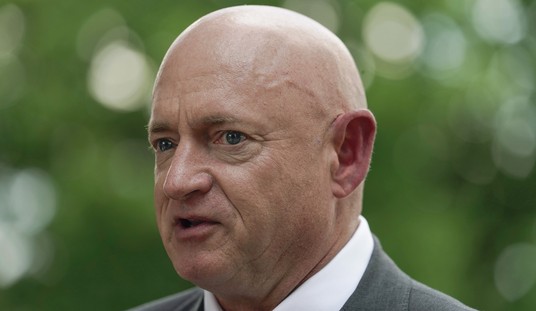The bazillionth episode in the tomb-raiding life of Lara Croft hit Tuesday. Most of the previous episodes have not been good. Many came with flaws that rendered them nearly unplayable in spots. Unlike most of the previous, and especially the most recent, installments, reviews for the 2013 installment have not been mixed. Lara is scoring about a 9.25 across the board on video game-review sites. But is this hype fanboys falling in love with a game babe, or a reflection of a strong game that may just bring a storied but troubled franchise back from the dead?
I spent about an hour with the new Tomb Raider, so while I don’t yet have a comprehensive view of the game’s full story arc, I do have some strong first impressions.
Story
Tomb Raider 2013 is an origins story, picking Lara up on an expedition to find a lost civilization off the coast of Japan. A nineteen year old on her first adventure, Lara isn’t yet the boss chick who greeted the gaming world in 1996. She’s young but determined, and convinced that if the expedition changes course, it will find the lost civilization they’re looking for. Changing course also risks entering the Dragon’s Triangle, an allegedly dangerous region of the Pacific similar to the Bermuda Triangle off Florida.
Things go about as you’d expect when a game amps up a threat — the expedition suffers a shipwreck and Lara finds herself stranded and alone. A knock on the head later, and she’s in a creepy, gory cave filled with bones and hanging corpses. It’s environments like this, and Lara’s tendency to lean on a couple of swears when she reacts to threats, that earn the game its M rating. No longer a cartoon, Tomb Raider is a cinematic beast.
The younger Lara is vulnerable. She picks up knocks and wounds. She scavenges and improves weapons as she goes. She gets hungry and has to hunt, which turns this Tomb Raider into more of an open world than any previous episode. She learns skills and, based on the dialogue, learns to overcome her fears. She thinks.
This Lara develops as the story goes, and is far more interesting and more realistically rendered than in any previous episode. She also eats meat, so she is more Duck Dynasty than Morrissey.
The story of Tomb Raider works extremely well, at least in the early going of the game that I’ve played.
Visuals
Tomb Raider 2013 may be the best-looking game ever produced. It’s certainly in the same league with Crysis 3 and Dead Space 3. The island of Yamatai, where the action takes place, is Skyrim on steroids — not quite as large as that world (so far, at least) but much more lushly and realistically realized. It feels like a real place. Trees sway in breezes, fires and torches cast realistic shadows in which you can hide from enemies, and deer, rabbits and wolves inhabit the tropical forests, providing food for the adventurer and the occasional threat. Shadows can make you jump. The voice acting is also strong, from Lara down to the thugs and islanders she encounters.
You can’t write a Tomb Raider review without commenting on how Lara looks, as her proportions have always been a big part of the franchise. In previous incarnations she has always been top heavy almost to the point of being comical, and showed off her curves in hot pants and swim suits. This younger Lara looks like she could be a real, and gorgeous, person. Well, gorgeous underneath all the blood, bruises, and muck. She’s more dressed for the part in this installment too, wearing cargo pants instead of hot pants. All of the revisions done to the character work very well. She’s still the same Lara Croft, but no longer a caricature.
From 1996 to 2013, Lara Croft has gone from this:
To this.
Lara Croft grows up by getting younger. Wouldn’t it be nice if we could all do that?
Gameplay
The game’s mechanics don’t throw you any curves or surprises. Switching between the hunting bow and pistol is a pop on the D-pad. The game clues you when you need to light your torch to set something on fire, which Lara does a lot. Jumping, climbing, ducking, and running all become intuitive. This game avoids the annoying habit in previous games, forcing players to get a jump so precise that you can spend an hour or more just getting one move right, in favor of smaller puzzles you’ll run across more frequently. Tomb raids seem to happen tangential to the main survival story, but supplement the story with discovered artifacts and documents.
Tomb Raider includes a true multiplayer mode for the first time in the franchise’s history. Players can become one of the game’s many characters and character types and gun for each other in sprawling jungle arenas. I only spent a few minutes with it, and it strikes me as the game’s only weakness. It just didn’t leave a strong positive impression. You have unlockable characters and weapons, you can customize your loadout, and the maps look great. Multiplayer’s overall impression, though, was decidedly meh. It may get better, or worse, with more play. I just haven’t spent much time with it at all.
Overall
Tomb Raider’s 2013 edition finally gets the franchise back on track. Gameplay is great, the visuals are beyond impressive, and the story works to push the young Lara toward becoming the tomb raider gamers have enjoyed since 1996. This is easily the best Tomb Raider yet, and deserves the hype. I give Tomb Raider 4.5 out of 5 stars.














Join the conversation as a VIP Member